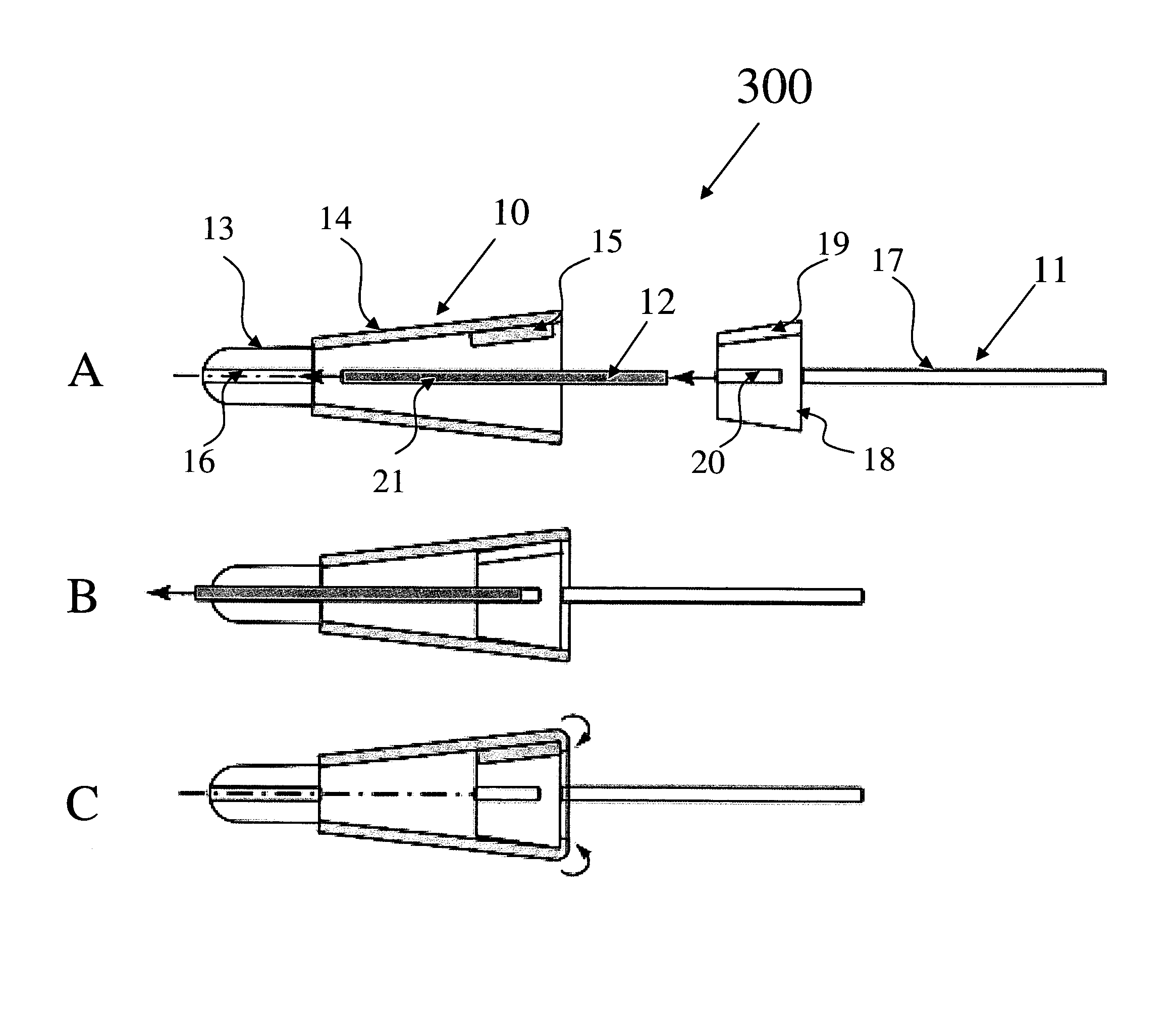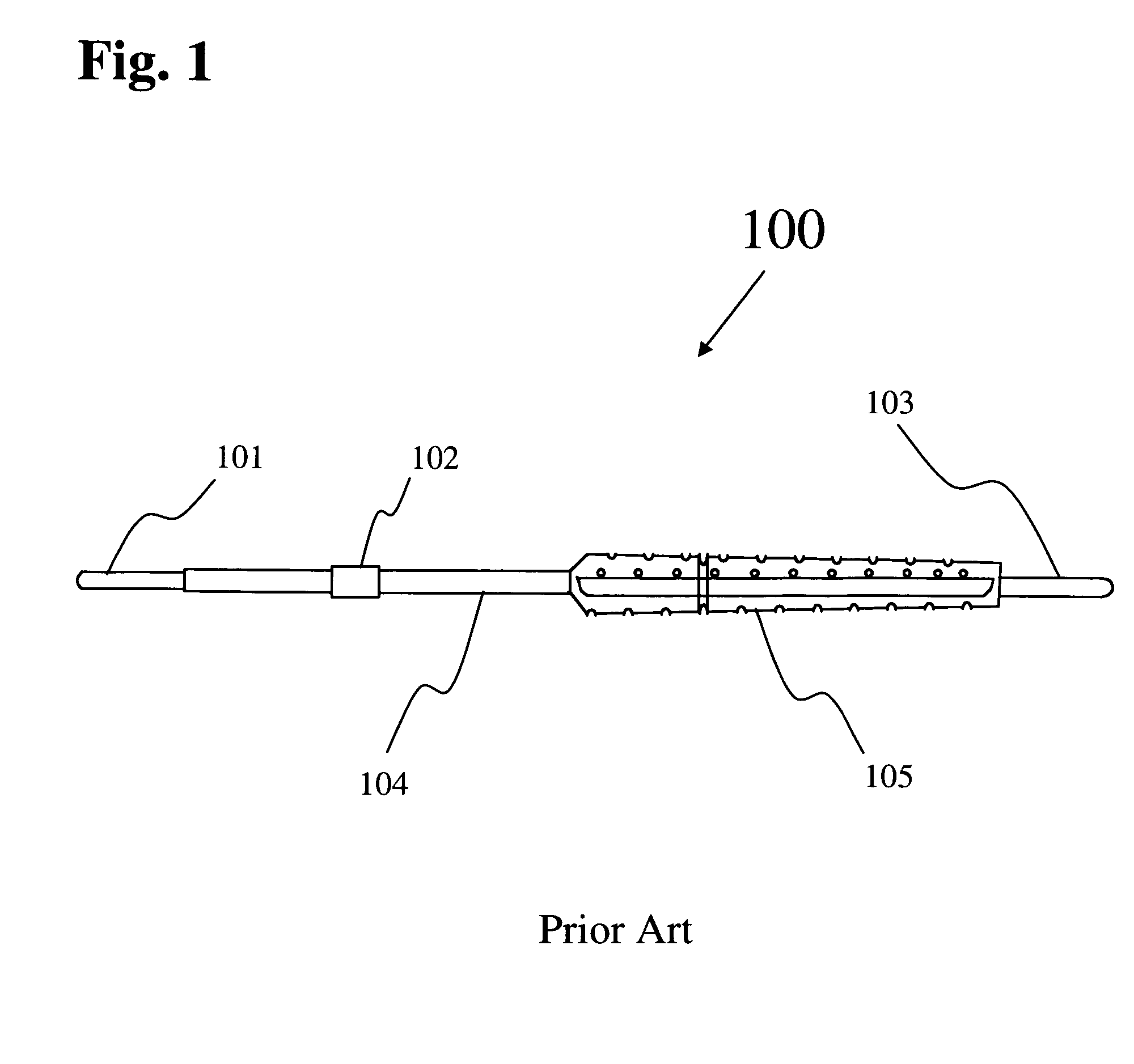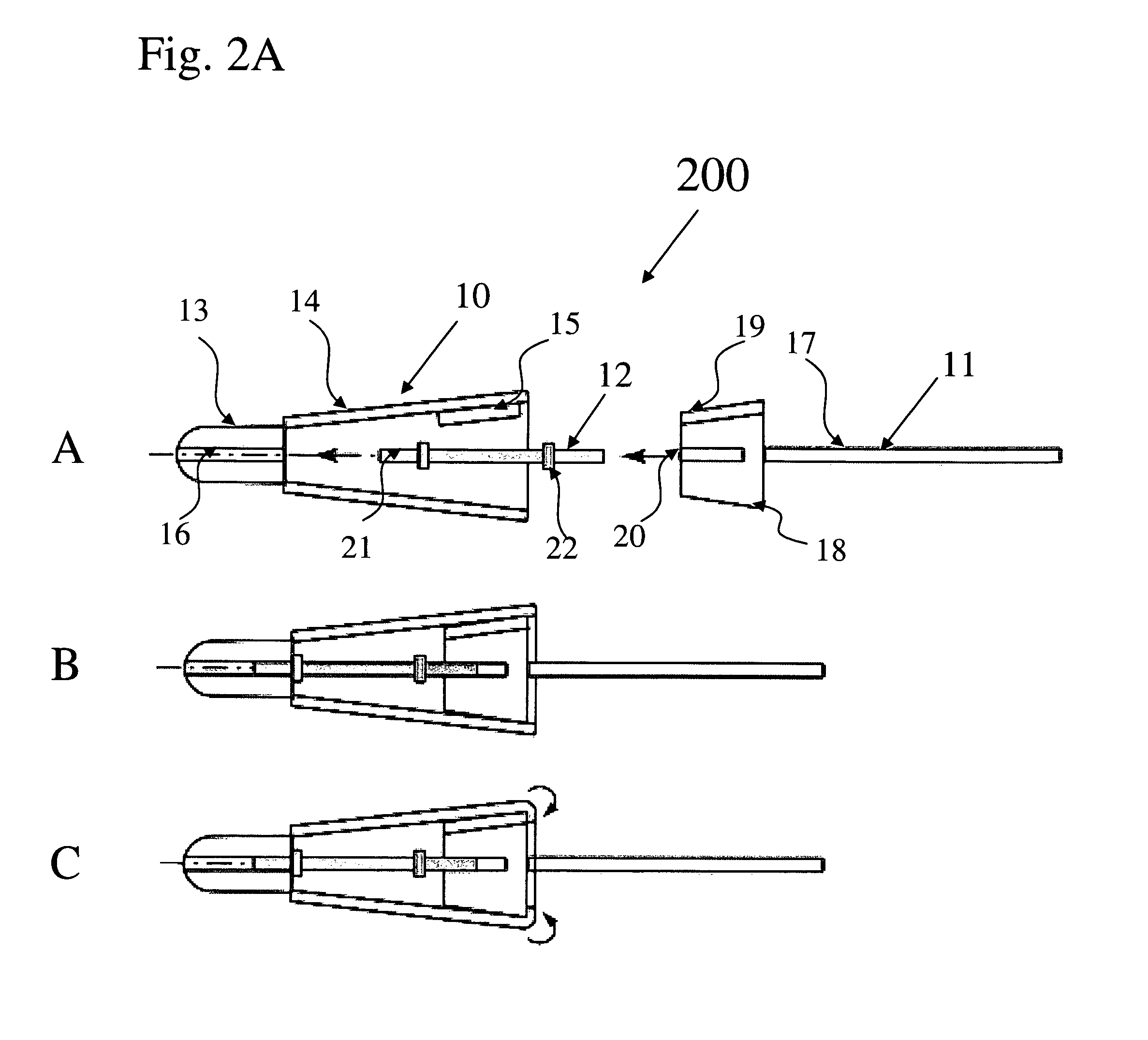Low cost modular tapered and spherical hollow reamers for medical applications
a technology of spherical hollow and reamer, which is applied in the field of medical applications, can solve the problems of poor cutting performance, poor cutting performance, and reduced cutting efficiency of conventional reamers, and achieves the effects of easy disassembly, low cost and reduced heat buildup
- Summary
- Abstract
- Description
- Claims
- Application Information
AI Technical Summary
Benefits of technology
Problems solved by technology
Method used
Image
Examples
Embodiment Construction
[0042]Reaming of the internal canal of bones is required in many surgical procedures of orthopedic surgery. These procedures include hip replacement, knee replacement and shoulder replacement. Reamers are also used in procedures that involve the internal fixation of fractures. Prior art reamers typically fall into two major classes: rigid and flexible shaft. Typically, reaming of the internal bone canal is achieved through utilization of a solid cylindrical or tapered reamer. Solid cylindrical or tapered reamers currently utilized are required to cut both cancellous bone (spongy bone) and cortical bone (hard bone). Cortical bone is generally denser and stronger, requiring an efficient cutter to machine the canal for a proper fit of the implant. Conventional reamers can cut cortical bone initially but can quickly dull after a single use, or at best a few uses. Once the reamer has dull cutting edges, it reduces the efficiency of bone cutting and in addition generates sufficient fricti...
PUM
 Login to View More
Login to View More Abstract
Description
Claims
Application Information
 Login to View More
Login to View More - R&D
- Intellectual Property
- Life Sciences
- Materials
- Tech Scout
- Unparalleled Data Quality
- Higher Quality Content
- 60% Fewer Hallucinations
Browse by: Latest US Patents, China's latest patents, Technical Efficacy Thesaurus, Application Domain, Technology Topic, Popular Technical Reports.
© 2025 PatSnap. All rights reserved.Legal|Privacy policy|Modern Slavery Act Transparency Statement|Sitemap|About US| Contact US: help@patsnap.com



